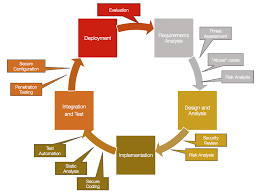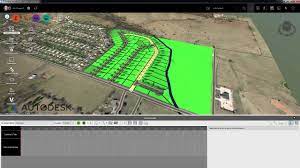Enhancing Cybersecurity with Artificial Intelligence: A Futuristic Approach
Artificial Intelligence in Cybersecurity: A New Era of Protection
The digital landscape is evolving rapidly, and with it, the threats to cybersecurity are becoming more sophisticated. As businesses and individuals increasingly rely on digital platforms, the need for robust cybersecurity measures has never been more critical. Enter artificial intelligence (AI), a transformative force that is reshaping how we approach security in the digital age.
The Role of AI in Cybersecurity
AI is revolutionizing cybersecurity by providing advanced tools and techniques to detect, prevent, and respond to cyber threats. Here are some ways AI is enhancing cybersecurity:
- Threat Detection: AI systems can analyze vast amounts of data at incredible speeds, identifying patterns and anomalies that may indicate a cyber threat. This capability allows for real-time threat detection and reduces the time it takes to respond to potential attacks.
- Behavioral Analysis: By learning typical user behavior, AI can detect deviations that may signal unauthorized access or insider threats. This proactive approach helps in mitigating risks before they escalate.
- Automated Response: AI can automate responses to certain types of cyber threats, such as isolating affected systems or blocking malicious traffic. This automation reduces the burden on human analysts and allows for swift action against attacks.
Benefits of AI-Driven Cybersecurity
The integration of AI into cybersecurity offers numerous benefits:
- Improved Accuracy: AI algorithms continuously learn from new data, enhancing their ability to accurately identify threats while minimizing false positives.
- Scalability: As organizations grow and their networks expand, AI systems can scale accordingly without a significant increase in resource requirements.
- Cost Efficiency: Automating routine security tasks with AI reduces the need for extensive human intervention, leading to cost savings over time.
Challenges and Considerations
While AI offers significant advantages in cybersecurity, there are challenges that need addressing:
- Evolving Threats: Cybercriminals are also leveraging AI technologies to develop more advanced attack methods. Continuous innovation is essential to stay ahead.
- Data Privacy: The use of AI requires access to large datasets, raising concerns about privacy and data protection. Ensuring compliance with regulations is crucial.
- Lack of Expertise: Implementing and managing AI-driven security solutions require specialized skills that are currently scarce in the job market.
The Future of AI in Cybersecurity
The future holds immense potential for AI in cybersecurity. As technology advances, we can expect even more sophisticated solutions capable of predicting threats before they materialize. Collaboration between industry leaders will be key to developing standards and best practices that maximize the effectiveness of AI while safeguarding privacy and ethical considerations.
The integration of artificial intelligence into cybersecurity marks a pivotal shift towards more resilient digital defenses. By harnessing the power of AI, organizations can better protect themselves against an ever-evolving threat landscape and ensure a safer digital future for all.
Enhancing Cybersecurity: 6 Essential Tips for Integrating AI Effectively
- Implement AI-powered threat detection systems to identify and respond to cyber threats in real-time.
- Utilize machine learning algorithms to analyze patterns and detect anomalies in network traffic for early threat detection.
- Employ AI-driven automation for faster incident response and remediation processes.
- Regularly update AI models with new data to enhance their accuracy and effectiveness in identifying potential security risks.
- Train cybersecurity professionals in understanding AI technologies to leverage them effectively in securing systems and networks.
- Ensure transparency and ethical use of AI in cybersecurity practices to maintain trust and accountability.
Implement AI-powered threat detection systems to identify and respond to cyber threats in real-time.
Implementing AI-powered threat detection systems is a crucial step in bolstering cybersecurity defenses. These advanced systems leverage machine learning algorithms to analyze vast amounts of data and identify potential threats as they occur. By continuously monitoring network activity and recognizing patterns indicative of malicious behavior, AI can detect anomalies that might signify a cyber attack. This real-time detection capability allows organizations to respond swiftly, minimizing the impact of threats and reducing the risk of data breaches. Moreover, AI systems can adapt and learn from new threats, ensuring they remain effective against evolving cyber challenges. Integrating AI into cybersecurity strategies not only enhances threat detection but also empowers security teams to focus on more complex issues by automating routine monitoring tasks.
Utilize machine learning algorithms to analyze patterns and detect anomalies in network traffic for early threat detection.
By utilizing machine learning algorithms to analyze patterns and detect anomalies in network traffic, organizations can significantly enhance their cybersecurity posture. This proactive approach enables early threat detection by identifying suspicious behavior or deviations that may indicate potential attacks. By leveraging the power of machine learning, security teams can swiftly respond to emerging threats and strengthen their defenses against cyber threats in real-time.
Employ AI-driven automation for faster incident response and remediation processes.
Leveraging AI-driven automation in cybersecurity significantly enhances the speed and efficiency of incident response and remediation processes. By automating routine tasks such as threat detection, alert triage, and initial response actions, organizations can drastically reduce the time it takes to identify and mitigate cyber threats. This rapid response capability minimizes potential damage and disruption caused by security incidents. AI systems can quickly analyze large volumes of data to detect anomalies and patterns that may indicate a breach, allowing security teams to focus on more complex issues that require human expertise. Ultimately, employing AI-driven automation empowers organizations to stay ahead of evolving threats while optimizing their cybersecurity resources.
Regularly update AI models with new data to enhance their accuracy and effectiveness in identifying potential security risks.
Regularly updating AI models with new data is crucial for enhancing their accuracy and effectiveness in identifying potential security risks. As cyber threats continuously evolve, AI systems must adapt to detect new patterns and anomalies that may indicate malicious activity. By feeding AI models with fresh, relevant data, organizations can ensure these systems remain current and capable of recognizing emerging threats. This proactive approach not only improves the precision of threat detection but also reduces false positives, allowing cybersecurity teams to focus on genuine risks. Ultimately, keeping AI models updated is a key strategy in maintaining robust and resilient cybersecurity defenses.
Train cybersecurity professionals in understanding AI technologies to leverage them effectively in securing systems and networks.
Training cybersecurity professionals in understanding AI technologies is crucial for leveraging these tools effectively in securing systems and networks. As AI becomes increasingly integrated into cybersecurity strategies, it is essential for professionals to grasp how these technologies function, their capabilities, and their limitations. By equipping cybersecurity experts with knowledge about AI algorithms, machine learning models, and data analysis techniques, organizations can enhance their ability to detect and respond to threats more swiftly and accurately. This training not only empowers professionals to utilize AI-driven tools effectively but also enables them to anticipate potential vulnerabilities that could be exploited by malicious actors using similar technologies. Ultimately, investing in education and training around AI ensures that cybersecurity teams are well-prepared to harness the full potential of these advanced tools in protecting digital assets.
Ensure transparency and ethical use of AI in cybersecurity practices to maintain trust and accountability.
Incorporating artificial intelligence into cybersecurity practices requires a commitment to transparency and ethical use to maintain trust and accountability. As AI systems become more integral in detecting and mitigating cyber threats, it is crucial for organizations to clearly communicate how these technologies are employed and ensure they adhere to ethical standards. This involves being transparent about data usage, decision-making processes, and the limitations of AI technologies. By fostering an environment of openness, organizations can build trust with stakeholders, ensuring that AI-driven cybersecurity measures are not only effective but also aligned with societal values and privacy concerns. Ensuring ethical use also involves regularly auditing AI systems for biases and inaccuracies, which helps maintain accountability and reinforces the credibility of cybersecurity efforts.





